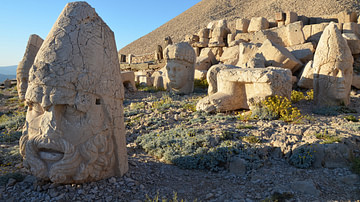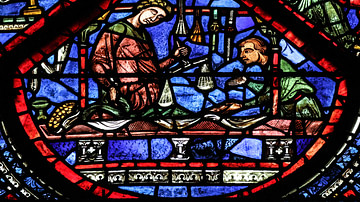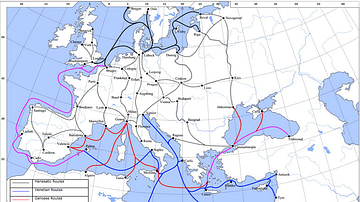Search
Search Results

Article
Third Gender Figures in the Ancient Near East
In the ancient Near East, there was a social standard by which men were ideally expected to behave. In the 21st century CE, expectations still exist, albeit in different forms. Normative masculinity through ancient Mesopotamia typically concerned...

Article
Exploring Mount Nemrut - A Meeting Point Between East & West
Set within the Anti-Taurus mountain range in southeastern Turkey, beyond the borders of Adiyaman, is the archaeological wonder of Mount Nemrut. Forgotten for centuries, the spellbinding peak of Nemrut Dagi (its Turkish name) has since managed...

Article
Eyes on the East: Chronicles of the Indian Ocean Spice Trade
As the 15th century ended, Europeans were still mostly in the dark about the Eastern world. Early travelers like Marco Polo had given the West tidbits of information, but these accounts were too highly colored and fragmentary to provide a...

Collection
Trade in the Middle Ages
Peoples, cities and states have traded since antiquity but in the medieval period, things escalated so that goods travelled ever greater distances by land, river and sea. Great cities arose thanks to commerce and international trade such...

Article
Ayutthaya: Venice of the East
The royal city of Ayutthaya (ah-you-tah-ya) was a small kingdom in Siam (modern Thailand), and it was an unrivalled commercial and maritime power from 1350-1767 CE. Ayutthaya became the second capital of Siam in 1438 CE when it absorbed the...

Collection
The History of The East India Company
The British East India Company (EIC) was founded as a trading company in 1600. Run by a board of directors in London, the company employed a private army, first to protect the trade it conducted in the Indian subcontinent and then to expand...

Definition
Tel Kabri
Tel Kabri is an archaeological site in the Western Galilee in northwestern Israel and the location of one of the largest palaces in Canaan in the Middle Bronze Age or "MB" (c. 2,000–1,500 BCE), the period in which Tel Kabri was at the height...

Image
Map of the Middle Assyrian Empire
This map illustrates the shifting political landscape of the Ancient Near East during the first half of the second millennium BCE, as Assyria began reasserting its independence and rising as a regional power. After centuries of foreign domination...

Collection
The Civilizations of the Near East, The People of Mesopotamia
This collection focuses on providing supplementary materials to students who want to enhance their school history studies and to teachers who want a more concise coverage of each lesson that they deliver. This chapter examines the economic...

Image
Map of the Trade Networks in the Middle Ages, c. 1200
This map illustrates the extent and growing interconnectivity of global trade networks at the start of the 13th century. Following centuries of fragmentation and isolation after the fall of the Western Roman Empire in 476 CE, new patterns...